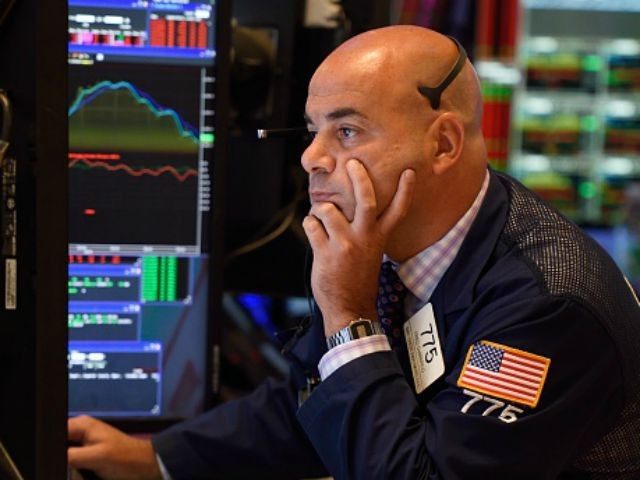On Monday, the Dow fell 588 points, posting its biggest drop in 4 years. The larger benchmark S&P 500 slipped into official correction territory, having fallen 10 percent from its May peak over the last several trading days. With Asian markets opening starkly lower again on Tuesday, Wall Street faces more volatile trading over the days ahead.
While the massive sell-offs in China may be the catalyst for the current turmoil, the market downturns are long overdue. Over the last 7 years, the markets have been driven higher by unprecedented fiscal and monetary stimulus. The underlying economy has never caught up to the historically high valuations in the stock market.
As the economist Herb Stein dryly noted, “If something cannot go on forever, it will stop.” A stock market separated from fundamental economic reality cannot go on forever. It is stopping.
Since the official end of the recession in June 2009, the Federal Reserve balance sheet has grown by more than $2.5 trillion. This represents liquidity added to the market after the economy was in recovery. In that same time, the total debt of the Federal government has expanded by $8 trillion.
In other words, the federal government, whether through appropriation or the printing press, has injected trillions of dollars into an economy that, officially, was out of a recession.
At the end of 2009, real GDP in the U.S. was $14.5 trillion. In March this year, GDP was $16.3 trillion. The basic problem, the one that is currently roiling the markets, is that economic output during this recovery has been far less than the amount of stimulus poured into the economy.
The U.S. economy is less than $2 trillion more than it was at the end of recession, even though the federal government has pumped many trillions more into the market. The picture is actually worse, if you account for the growth in American population.
The population of the U.S. has grown by almost 7 percent. If the economy had expanded organically, simply matching the growth in population, the size of the economy would be $15.4 trillion. So, the actual economy has created less than $1 trillion a year in higher output. Considering how aggressively the federal printing press was creating money, its not clear the stimulus did much beyond inflating financial prices.
The employment situation goes a long way to understanding why there has been so little economic growth. In June 2009, when the recession officially ended, 80 million American adults weren’t in the labor force. Today, more than 93 million adults aren’t in the labor force.
The number of Americans with jobs has increased by 8 million since the end of the recession. If jobs had simply kept pace with population growth, though, 9 million, not 8 million, more would be working. The economy has lost jobs during the expansion.
Whatever is going on in China, which is almost impossible to really know given the system of government there, the current turmoil sweeping the markets is inevitable, given the horrible economic reality in the U.S.
The stock market and, to a degree, corporate earnings are built on the trillions in artificial stimulus injected by the government and the Federal Reserve. There has been almost no economic growth to match the stimulus.
Ultimately, the market will mirror the overall economy. Unless the government steps in with even more stimulus, the market looks to be starting that alignment. If it continues, it will have much further to fall.

COMMENTS
Please let us know if you're having issues with commenting.